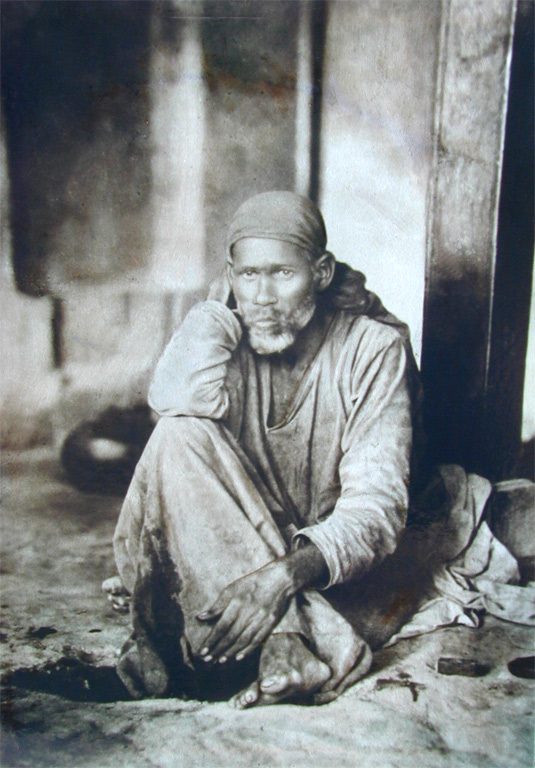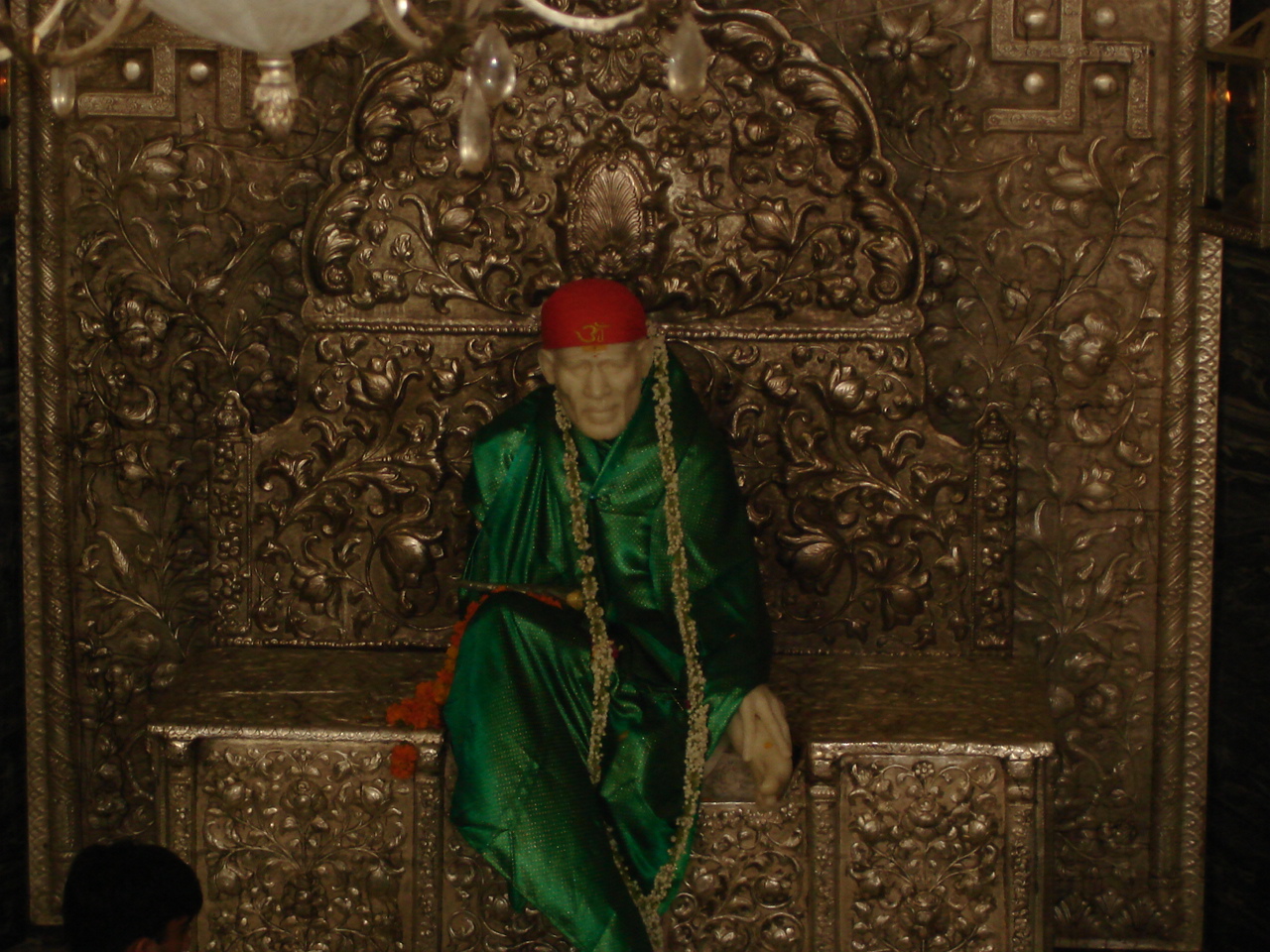
Sai Baba of Shirdi is a patron saint to many. The small town of Shirdi is known to us only because Sai Baba resided and did his work there.
Sai Baba was a fakir. A fakir is someone who has given up on Earthly pleasures and attachments to things physical. It includes very things we describe as wealth and luxury.
A fakir, or faqir (/fəˈkɪər/; Arabic: فقیر (noun of faqr)), derived from faqr (Arabic: فقر, “poverty”) is a Sufi Muslim ascetic who has taken vows of poverty and worship, renouncing all relations and possessions. Fakirs are prevalent in the Middle East and South Asia. A fakir is thought to be self-sufficient and possesses only the spiritual need for God.
Sai Baba’s time is early 20th century and he is said to have died in 1918. So, we have some photos of Sai Baba when he was alive. Some of them are shown in this post. As you can see in the photo below, he is wearing clothes which seem unwashed and are torn and is sans any adornment which is in line with his status as a fakir. No one had to say to us Inme fakiri dikhti hai to inform us or to confirm his status as a fakir. That he possesed almost nothing in terms of money or wealth is another indicator. What we know of him is because his contemporary disciples have told us so. That he could laurel himself with the finest of clothes of silk and adorn himself with loads of gold and silver ornaments was certainly possible, as his contemporary disciples included some very wealthy people. But instead, being true to his nature, he chose to live a simple life, and not partaking any worldly pleasures or objects that were indeed seen by him as not required.

Sai Baba’s work included helping one and all, including especially the downtrodden and people on the margins of the society. And now 100 years after his death, his disciples seem to have reinvented him in their own self-image. Look at the photo above, which is the template for his idols at Shirdi and elsewhere. And look at what they have done with the idol made of marble. They have made it into something which Sai Baba was not. Look at the corruption of his image that they have made.


A Sai Baba adorned with gold!
This just a perversion of the saint and what he stood for, bringing him down to and equalling in the depravity of wealth which he was indifferent about. He is adorned with the finest silks and surrounded by gold and silver ornaments. And devotees make show off triumphantly what they have “devoted” to the cause of Sai Baba. Someone had made a gold crown for him, how much he himself must have despised something like that, he chose to wear a torn headcloth over a crown.

A Sai Baba surrounded by silver!
The revamped image of Sai Baba is in tune with the self-image of the devotees. They see him enjoying the finest silks and ornaments made of gold, silver and diamonds and hard cash just as they do. The people who are “managing” the temple after him, are no different. In name of charity, they are doing anything but charity. The management of the temple now seeks to remove all the beggars from the temple premises. So if Sai Baba came to Shirdi 100 years later, he would not be allowed as he would resemble a beggar. The irony of the situation is not lost, you just have to visit Shirdi once to see the rampant monetization of the premises. The entire setup is just the anti-thesis of what Sai Baba was and what he stood for. And this my friends is the tragedy of Sai Baba..
(All the images CC by SA from Wikimedia Commons)


 (Draft under work.)
(Draft under work.)